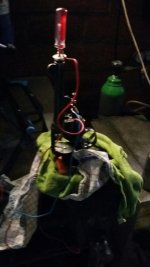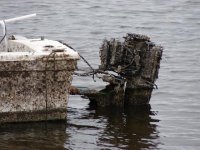Varel
Member
Recently I removed leading out of my uberti single action .357 using electrolysis.
I was surprised by the effectivnes. I saw a video of it on u tube and wanted to try it myself. Since my local gun shop was out of lead remover and my ballistol was not softening it ...
I use: a wax ear plug, a cell phone charger 5 volts output, vinegar, water and a stainles steel rod, and the rubbers of a couple 1cc syringes .
Vinegar and water 50/50 in the plugged barrel. Positive on the frame and negative on the rod. The rubbers on the rod to ensure there is no contact between the barrel and the rod.
Since its cheap, easy and effective I was wondering what's the catch?
I was surprised by the effectivnes. I saw a video of it on u tube and wanted to try it myself. Since my local gun shop was out of lead remover and my ballistol was not softening it ...
I use: a wax ear plug, a cell phone charger 5 volts output, vinegar, water and a stainles steel rod, and the rubbers of a couple 1cc syringes .
Vinegar and water 50/50 in the plugged barrel. Positive on the frame and negative on the rod. The rubbers on the rod to ensure there is no contact between the barrel and the rod.
Since its cheap, easy and effective I was wondering what's the catch?



